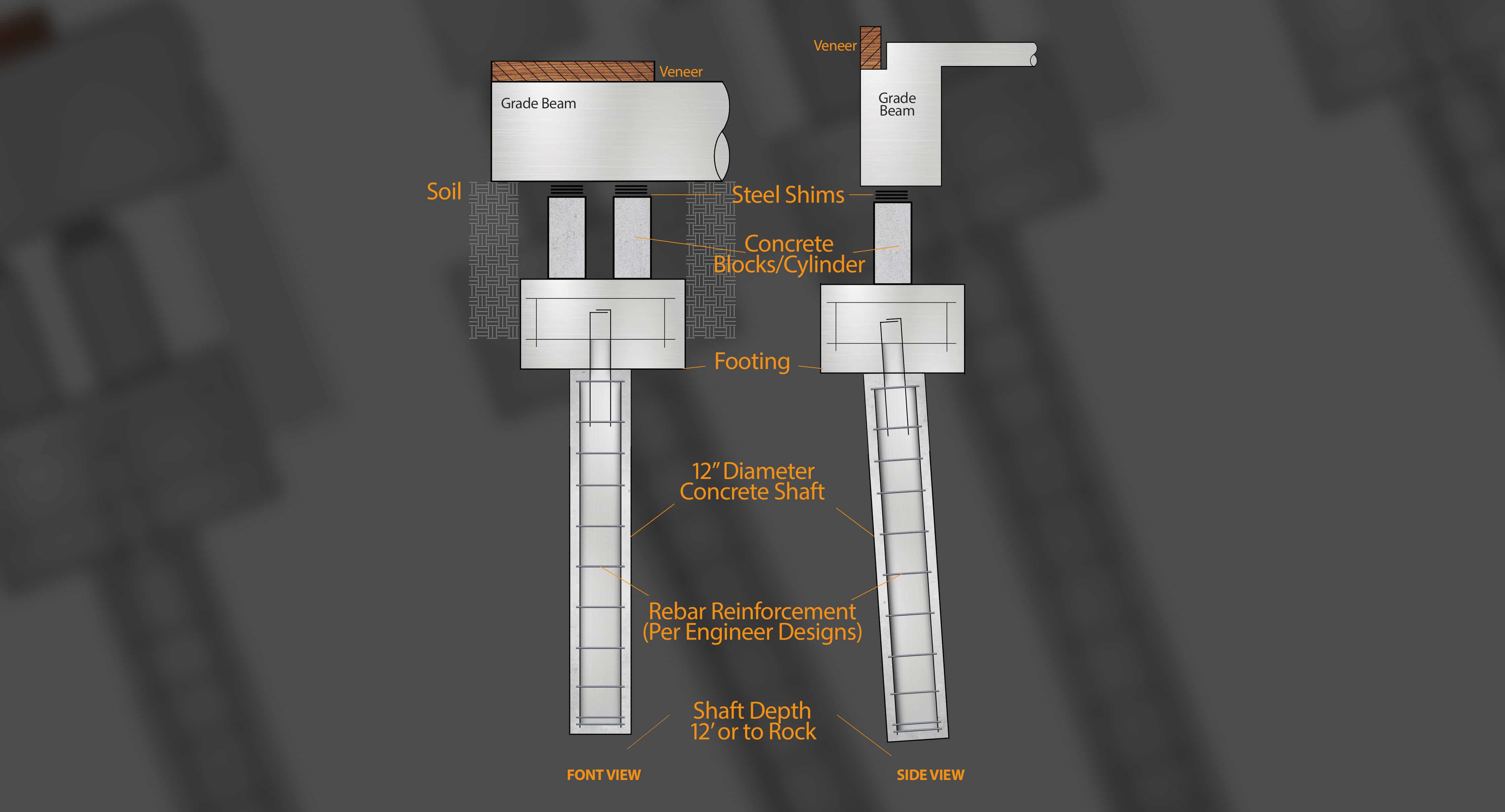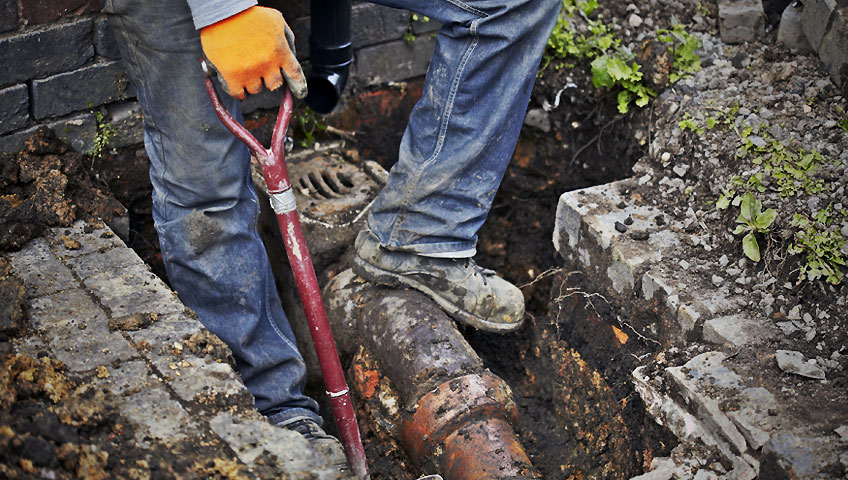For folks outside the construction industry, drilled piers and piles are more or less interchangeable terms. After all, they’re both processes for strengthening a foundation, but we will discuss some differences between a pier foundation vs. pile foundation. Let’s take a closer look at the differences between a drilled pier vs. pile. While the two are similar in that they both resist or transfer heavy vertical and horizontal loads, they operate behind different mechanisms.
What Are Foundation Piles?
Piles are structural columns made from either steel or concrete. They’re used for underpinning foundations and transferring the weight of the load to deeper soil layers or bedrock. Piles get their load-bearing capacity by end-bearing the soil and from the friction generated between the surrounding soil and pile’s side surface.
The depth at which piles are driven is very important and determines their success rate. Piles are pushed into the soil until they reach “refusal.” This means they are pushed into the ground until they reach the point where they begin lifting the structure they’re supporting.
What is a drilled pier foundation?
With a drilled pier, a hole is drilled into the ground. A steel cage is inserted into the hole and concrete is poured over. The pier may reach the soil bedrock or even exceed it. It may also not reach the deeper bedrock at all. An evaluation determines the depth of the hole and diameter. In any case, piers are designed to support between 120% to 150% of the structure’s weight.
Drilled Pier vs Pile: Comparison at a Glance
Now let’s take a look at driven piers and piles when compared side to side for a better understanding of how they differ.
- Piles consist of vertical pillars made from concrete or steel. Piers are similar in size and shape.
- Piles are often used when the soil lacks firm strata, such as bedrock.
- Piles are usually meant for supporting greater loads, such as highway bridges. Learn more about when to use concrete piles. Piers are meant for smaller applications, such as sheds and small living units.
We Install Piers and Piles
There is no need to figure out on your own whether your home requires piles or a pier to stabilize your foundation. Contact us at Align Foundation Repair, and we will send a crew member out for a free audit to make an assessment and determine which foundation reinforcement is best for your needs in the greater Dallas-Fort Worth area.



